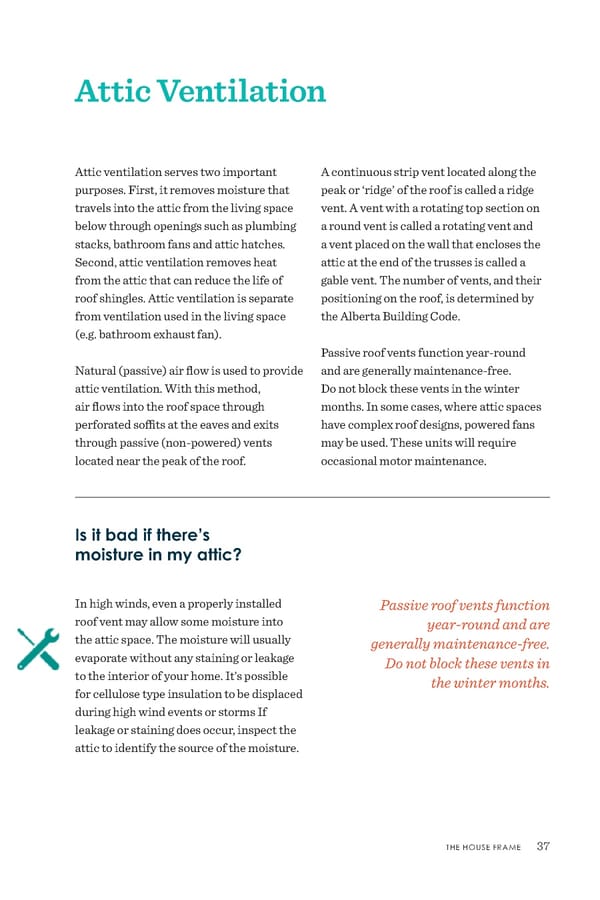Attic Ventilation Attic ventilation serves two important purposes. First, it removes moisture that travels into the attic from the living space below through openings such as plumbing stacks, bathroom fans and attic hatches. Second, attic ventilation removes heat from the attic that can reduce the life of roof shingles. Attic ventilation is separate from ventilation used in the living space (e.g. bathroom exhaust fan). Natural (passive) air flow is used to provide attic ventilation. With this method, air flows into the roof space through perforated soffits at the eaves and exits through passive (non-powered) vents located near the peak of the roof. A continuous strip vent located along the peak or ‘ridge’ of the roof is called a ridge vent. A vent with a rotating top section on a round vent is called a rotating vent and a vent placed on the wall that encloses the attic at the end of the trusses is called a gable vent. The number of vents, and their positioning on the roof, is determined by the Alberta Building Code. Passive roof vents function year-round and are generally maintenance-free. Do not block these vents in the winter months. In some cases, where attic spaces have complex roof designs, powered fans may be used. These units will require occasional motor maintenance. In high winds, even a properly installed roof vent may allow some moisture into the attic space. The moisture will usually evaporate without any staining or leakage to the interior of your home. It’s possible for cellulose type insulation to be displaced during high wind events or storms If leakage or staining does occur, inspect the attic to identify the source of the moisture. Is it bad if there’s moisture in my attic? Passive roof vents function year-round and are generally maintenance-free. Do not block these vents in the winter months. THE HOUSE FRAME 37
 ANHWP Care & Maintenance Guide 2022 Page 38 Page 40
ANHWP Care & Maintenance Guide 2022 Page 38 Page 40